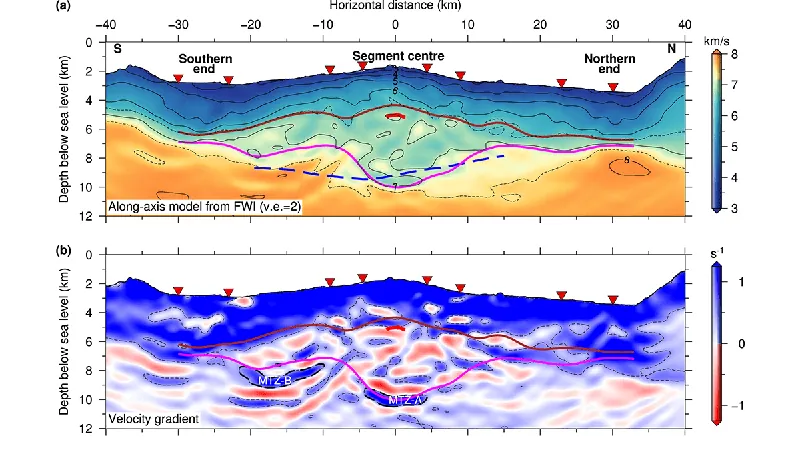
Wall Street Bounces Back Ahead of Trump's Turbulent Tariff Strategy
2025-04-02
Author: William
In a rollercoaster day for U.S. stocks, Wall Street showed signs of resilience on Wednesday, just hours before President Donald Trump was scheduled to unveil significant tariffs as part of his controversial "Liberation Day" initiative. This announcement is poised to reshape the global economic landscape profoundly.
The S&P 500 index gained 0.7%, though it experienced dramatic fluctuations, initially dropping by 1.1% before reversing to climb back up. This week has seen a consistent pattern of the index opening sharply lower only to recover by the end of the trading day.
Meanwhile, the Dow Jones Industrial Average added 235 points, or 0.6%, while the Nasdaq composite climbed 0.9%. Both indexes mirrored the S&P’s volatility, illustrating anxiety mixed with optimism in an unpredictable market.
A notable contributor to the market's ups and downs was Tesla, whose stock initially plummeted over 6% following disappointing vehicle delivery reports for the first quarter. However, the stock surged 5.3% later in the day after reports surfaced that Trump indicated Elon Musk might step back from his government role soon, alleviating some investor concerns.
A prevailing uncertainty hangs over financial markets globally, primarily due to the potential implications of Trump's ongoing trade war. While the President claims that these tariffs are essential for achieving fair trade practices and revitalizing American manufacturing, there are growing fears that such measures could hinder economic growth and push inflation rates beyond the Federal Reserve's 2% target.
Nevertheless, optimism can be observed among some market analysts. Kurt Reiman, head of fixed-income Americas at UBS Global Wealth Management, mentioned, "We do not know how long the previously enacted tariffs and any future tariffs will remain in force, but we believe peak tariff uncertainty may soon be behind us." This sentiment points to the possibility that the administration may have set a foundation for trade policies that could stabilize the market in the future.
After trading hours, Trump confirmed a baseline 10% tariff on imports across the board, with even higher rates targeting nations with trade surpluses with the U.S. Key figures he stated include a staggering 34% tax on imports from China and 20% on those from the European Union. The repercussions of such actions sent stocks like Deckers Outdoor and Lululemon tumbling in after-hours trading.
In light of these developments, concerns linger about the potential economic freeze that the tariffs may trigger among American households and businesses. Recent surveys have shown a rise in pessimism regarding the economy, raising red flags for economists who are eagerly awaiting the upcoming jobs report from the U.S. government. Interestingly, a separate report from ADP Research hinted that hiring might be stronger than economists anticipated, suggesting that the job market remains robust—an essential element in averting a recession.
In the bond market, yields oscillated in response to stock market volatility. The yield on the 10-year Treasury note dipped to 4.11% before rebounding to 4.18%, reflecting fluctuating investor expectations regarding economic growth and inflation.
While some companies faced challenges—like Newsmax, which saw its stock tumble 77.5% in its third trading day—others, particularly in the airline industry, found relieving gains amid recovery efforts following fears that tariff-related anxieties would suppress consumer travel.
As trading closed, the major indexes showed mixed results: the S&P 500 finished with a modest rise of 37.90 points, the Dow Jones increased by 235.36 points, and the Nasdaq composite climbed 151.16 points. International markets reflected similar mixed trends, emphasizing the global reach and implications of America's trade strategies.
Looking ahead, Trump’s anticipated tariffs are scheduled to take effect on April 2, a date that has been touted as "Liberation Day" for American trade. With the landscape rapidly shifting, all eyes will remain on financial markets as they react to the unfolding economic narrative.









 Brasil (PT)
Brasil (PT)
 Canada (EN)
Canada (EN)
 Chile (ES)
Chile (ES)
 Česko (CS)
Česko (CS)
 대한민국 (KO)
대한민국 (KO)
 España (ES)
España (ES)
 France (FR)
France (FR)
 Hong Kong (EN)
Hong Kong (EN)
 Italia (IT)
Italia (IT)
 日本 (JA)
日本 (JA)
 Magyarország (HU)
Magyarország (HU)
 Norge (NO)
Norge (NO)
 Polska (PL)
Polska (PL)
 Schweiz (DE)
Schweiz (DE)
 Singapore (EN)
Singapore (EN)
 Sverige (SV)
Sverige (SV)
 Suomi (FI)
Suomi (FI)
 Türkiye (TR)
Türkiye (TR)
 الإمارات العربية المتحدة (AR)
الإمارات العربية المتحدة (AR)